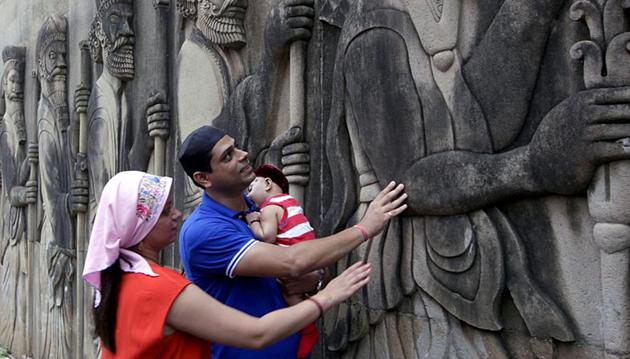Can a 100 births stop the decline in Parsi population?
Community groups are sceptical whether the scheme will revive their numbers so quickly, but they agree it is making a difference
On Saturday, Parsi-Zoroastrians announced the second phase of the ‘Jiyo Parsi’ scheme to stop the steep decline in their numbers.

India’s Parsis have been facing a relentless demographic decline. In the decade till 2011, when the last national census was held, their numbers fell from 69,601 to 57,264 . Their numbers have been falling every decade since 1941, when it had reached a peak of more than 1,00,000. Between 1971 and 1981 it fell by 20%, the sharpest decline till the latest decennial count.
A study by demographer Ava Khullar listed several reasons, including low fertility, or the number of children born to every woman, migration, a large number of Parsis who remain unmarried, late marriages, and exclusion of kids born to women married to non-Parsis for the decline. Even in 1971, birth rate among Parsis was 10.6 per 1,000 compared to 41.2 for the general Indian population.
There is no estimate for the current birth rate among Parsis, but the fertility rate is estimated to be less than one. (fertility rate is the average number of children that would be born per woman). This means that an average Parsi woman gives birth to less than one child. India’s fertility rate is now around 2.3, according to demographers from the International Institute for Population Sciences, Mumbai. A fertility rate of 2.1 children per woman is required if population has to remain stable.
Jiyo Parsi, which is funded by the government and supported by UNESCO’s PARZOR (Parsi-Zoroastrian) Foundation, Bombay Parsi Punchayet, Tata Institute of Social Sciences, aims to stop or at least slowdown this decline. Apart from providing medical services to infertile couples, the scheme runs a slick campaign to encourage more young people to marry and have more kids. On Saturday, the programme’s coordinators announced that they have facilitated 104 births in the first three years of the scheme, invigorating their declining numbers. The Jiyo Parsi team is confident that they will be able to stabilise their population, if not the decline, in the next 10 years.
Community groups are sceptical whether the scheme will revive their numbers so quickly, but they agree it is making a difference. “There won’t be a jump in population. It will take time — we don’t know,” said Anahita Desai of World Alliance of Parsi and Irani Zarthosthis. “But we are grateful to the government for funding the programme. It has recognised our uniqueness.”
Despite the celebration at Jiyo Parsi, deaths in the community still outnumber births by manyfold. Parsiana, a magazine published from Mumbai, documents births and deaths from across the world. Parsiana compiles the statistics from reports sent by community groups from across the world. For June, the magazine counted five births and 44 deaths in Mumbai, where majority of India’s Parsis live.
When statistics from the 2011 census were published last year, Dr Shernaz Cama, a member of the Jiyo Parsi team, said, “We knew this was coming, which is why we started the UNESCO PARZOR (Parsi-Zoroastrian)programme in 1999 and pushed for intervention…..Now it is even more critical that every single baby should be counted.”
Community organisations said the scheme may not drastically change things, but could help in the long run. “I think it [Jiyo Parsi] is a wonderful project, because for the first time the government is doing the opposite of what it has advocated — population control for the country,” said Desai.
The next phase of the project will try to send the message to the young that while their career is important, commitment to their job should not stop them from building a family.
“As far as the project’s effectiveness is concerned they are trying to change the mindset: they are telling people to get married early, have children. The campaigns are humorous and effective,” said Desai. The numbers – a thousand babies- may not be much, but as far as advocacy is concerned it is making a difference. The advocacy tries to look at the issue; it is effective. For instance, couple who have one child will think of having a second one.”
Stay updated with all the Breaking News and Latest News from Mumbai. Click here for comprehensive coverage of top Cities including Bengaluru, Delhi, Hyderabad, and more across India along with Stay informed on the latest happenings in World News.
Stay updated with all the Breaking News and Latest News from Mumbai. Click here for comprehensive coverage of top Cities including Bengaluru, Delhi, Hyderabad, and more across India along with Stay informed on the latest happenings in World News.





